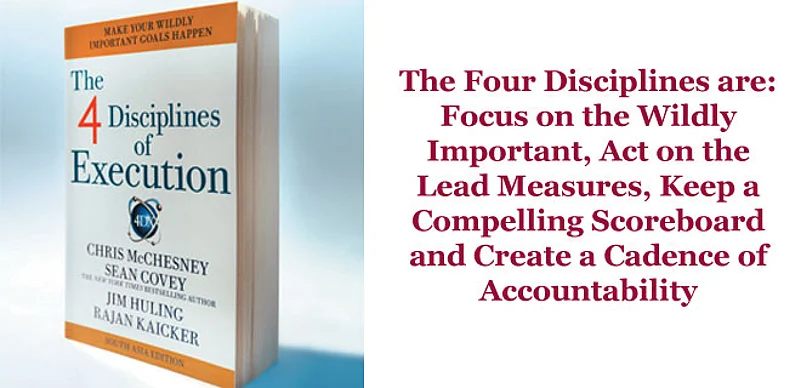Anyone attending management meetings will recollect how crisp presentation, pie charts and smart visuals dominate the setting. But, all that is fast changing in the now familiar VUCA (volatility, uncertainty, complexity and ambiguity) world, where strategies are meant to withstand adversities. The key to success is to create a culture of execution and maintain focus.
Chris McChesney, Sean Covey, Jim Huling and Rajan Kaicker introduce and then rigorously examine what they characterise as four disciplines of execution. Their combined business experience is impressive as all of them are leaders at FranklinCovey with decades of business knowhow. They have completed more than 1,500 implementations of the 4 Disciplines of execution (4DX) before they were ready to write this book and they have created a set of tools that can be useful for small businesses or large companies.
Spread over three very useful and focused sections, the progress made is incremental, allowing the reader to internalise at each level what the foursome share from their vast experience. In Section 1, they introduce the four disciplines of execution, in Section 2 they get into explaining how to install it with a team, and then explain how to expand installation throughout the given enterprise in Section 3.
One will particularly like this book because it talks about taking action on your strategic goals, and not developing more theory. There are four clear roadmaps to help you overcome the ‘whirlwind’ of the day-to-day work that keeps leaders, and teams, from executing the programs that drive real change. The Four Disciplines are: Focus on the Wildly Important, Act on the Lead Measures, Keep a Compelling Scoreboard and Create a Cadence of Accountability.
Focus on the ‘wildly important’, rather than on what is urgent, is something that Steve Covey offered decades ago, but they have tried to take this ahead by introducing three additions.
Throughout the book, a lively narration has been maintained, with illustrations that give a better idea of what they are stressing on and why. Also of use is the fact that examples can be easily related from real people in real-world situations, who are struggling with real questions to answer and real problems to solve.
Another important tool shared in the books is the supplementary resources that include “4DX Frequently Asked Questions,” “Bring It Home” observations and recommendations, and a remarkably candid response to “So, Now What?” These sections prove to be very valuable, especially if you plan to use the 4DX in your business. The book will be of interest for both who are at senior positions and those aspiring to reach there.
Over 300 pages in all ensure that you use the book with markings that you can cross-refer from time to time, because that is the only way this book will best work for those attempting to implement the 4DX into action.













